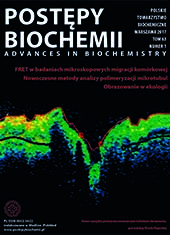Getting an insight into the brain â new optical clearing techniques and imaging using light-sheet microscope
Abstract
One of the biggest challenges in neuroscience is to understand how brain operates. For this, it would be the best to image the whole brain with at least cellular resolution, preserving the three-dimensional structure in order to capture the connections between different areas. Most currently available high-resolution imaging techniques are based on preparing thin brain sections that are next photographed one by one and subsequently bigger structures are reconstructed. These techniques are laborious and create artifacts. Recent optical clearing methods allow to obtain literally transparent brains that can be imaged using light-sheet microscope. The present review summarizes the most popular optical clearing techniques, describing their different mechanisms and comparing advantages and disadvantages of different approaches, and presents the principle of light-sheet microscopy and its use in imaging. Finally, it gives examples of application of optical tissue clearing and light-sheet imaging in neuroscience and beyond it.
Downloads
Published
Issue
Section
License
All journal contents are distributed under the Creative Commons Attribution-ShareAlike 4.0 International (CC BY-SA 4.0) license. Everybody may use the content following terms: Attribution — You must give appropriate credit, provide a link to the license, and indicate if changes were made, ShareAlike — If you remix, transform, or build upon the material, you must distribute your contributions under the same license as the original. There are no additional restrictions — You may not apply legal terms or technological measures that legally restrict others from doing anything the license permits.
Copyright for all published papers © stays with the authors.
Copyright for the journal: © Polish Biochemical Society.




